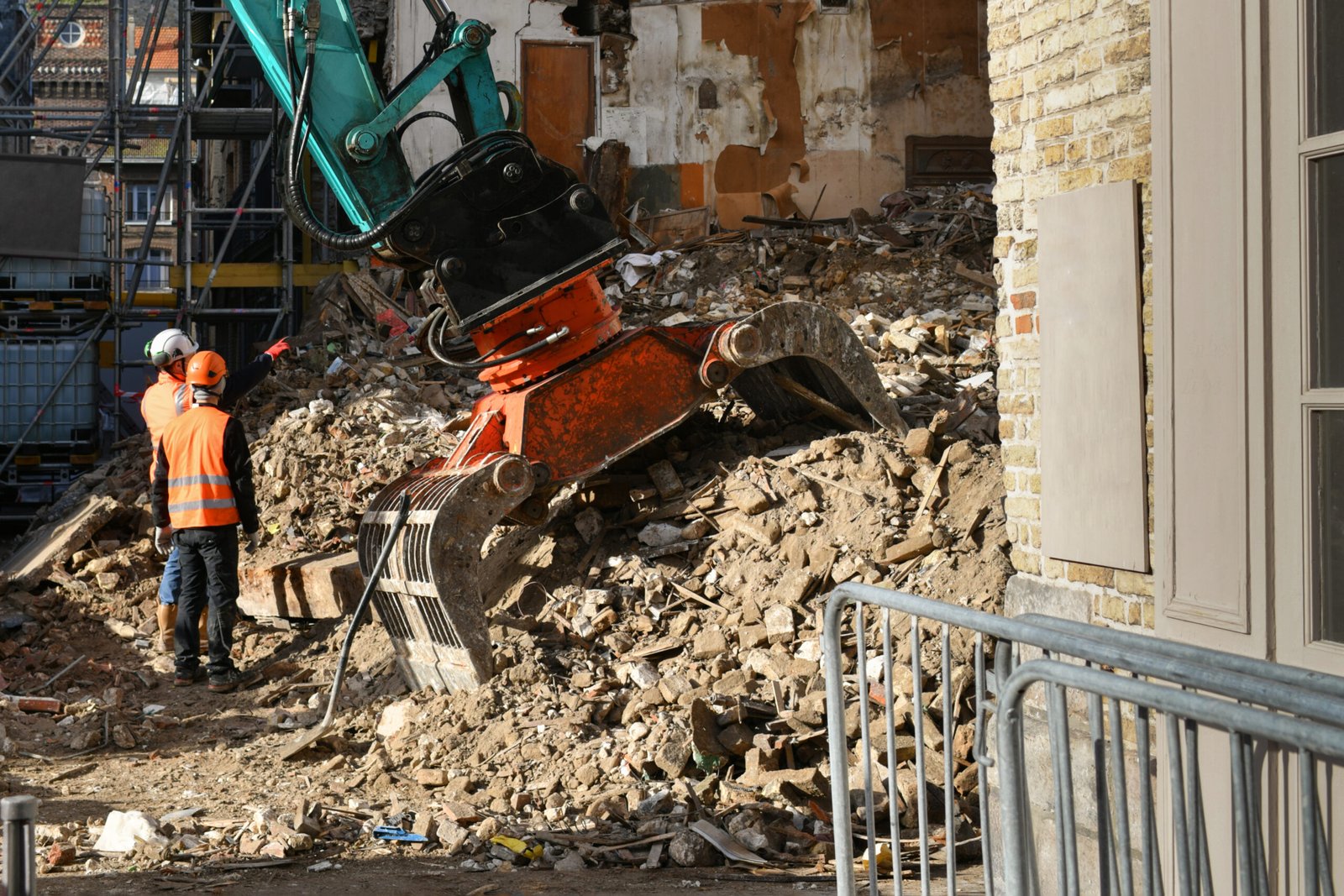Demolition and Site Preparation: Essentials for New Construction Readiness
Before the first foundation is poured for a new construction project, a critical process must take place: the clearing and preparation of the construction site. This process typically involves systematic demolition of existing structures to make way for new development. A well-orchestrated demolition operation is key to ensuring that site preparation goes smoothly, setting the tone for the entire project. It’s not merely about tearing down what currently stands; it’s a strategic step in creating a clean slate for construction teams to work effectively.
In the planning stages, understanding the nuances of the site is essential. This includes identifying any pre-existing conditions that might affect construction, such as in-ground pools, which require specialized expertise in pool demolition. Careful consideration goes into evaluating the materials that will be demolished, how to safely dismantle structures, and how to manage debris in a manner that’s environmentally responsible and cost-effective.
The transition from demolition to construction site preparation requires meticulous attention to detail. Site preparation encompasses clearing debris, leveling ground, and preparing the foundation. These processes ensure that the site meets all regulatory guidelines and is optimized for the building phases to come. This preparation is an investment into the longevity of the structure and the safety of all future construction activities on site.
Preparation and Planning
Ensuring a streamlined process during demolition and preparation for new construction involves meticulous preparation and planning. Success in this phase sets the groundwork for a safe, compliant, and efficient building project.
Assessment and Surveying
Before any physical work begins, a thorough assessment of the site is crucial. This includes surveying the land to identify topographical features, existing utilities, and the soil type. A professional surveyor marks the boundaries and helps understand the drainage, erosion risks, and the best location for the foundation. This phase might include testing of soil for compaction and suitability, taking into account the future structure’s design requirements.
Permits and Regulatory Compliance
Obtaining the necessary permits is a vital step in the site preparation process. This involves submitting detailed plans to local authorities and ensuring all aspects of the project comply with zoning, safety, and environmental regulations. Approvals are needed not just for the demolition and clearing but also for the grading, drainage, and foundation work. Compliance with regulations ensures safety and mitigates future legal and environmental issues.
Site Clearing and Grading
Initial clearing of the site involves removing vegetation, debris, and any existing structures that are not part of the new construction plans. Grading the land follows to create a level base for construction and effective drainage. Installation of silt fences can help control erosion during this phase. Attention to detail during grading ensures the site is prepared for a stable foundation, optimizing the longevity and integrity of the future building. For assistance with excavation and grading, professionals such as those at PCR Corp Services can provide expert services tailored to the project’s specifications.
Execution and Safety
Proper execution of demolition and site preparation is critical to both project success and the safety of everyone involved. Utilizing the correct equipment and enforcing stringent safety protocols ensures a smooth transition to the construction phase.
Equipment and Machinery
The use of heavy equipment such as bulldozers and excavators is fundamental in demolition and site preparation. General contractors must ensure that these vehicles are in optimal working condition to handle the tasks of demolition and clearing. Moreover, adherence to the site design plan is essential for efficiency during land preparation.
- Heavy Equipment Checklist:
- Operational bulldozers
- Maintained excavators
- Certified machinery operators
Worker Safety and PPE
The safety of workers on a construction site is paramount. It is essential for all personnel to wear personal protective equipment (PPE) at all times. Engineers and safety officers should conduct regular trainings and briefings to reinforce the use of:
- Hard hats
- Safety glasses
- High-visibility vests
- Steel-toed boots
Ensuring proper disposal of hazardous materials is also a key aspect of maintaining a safe work environment.
Handling Debris and Waste
Efficiently managing the removal of debris is an integral part of the construction process. Demolished materials need to be sorted and transported away from the site to facilitate effective cleanup. Barriers should be in place to prevent any waste from affecting the surrounding environment, and specialists in Expert Cleanup and Debris Removal should be employed to handle the proper disposal of construction waste.








